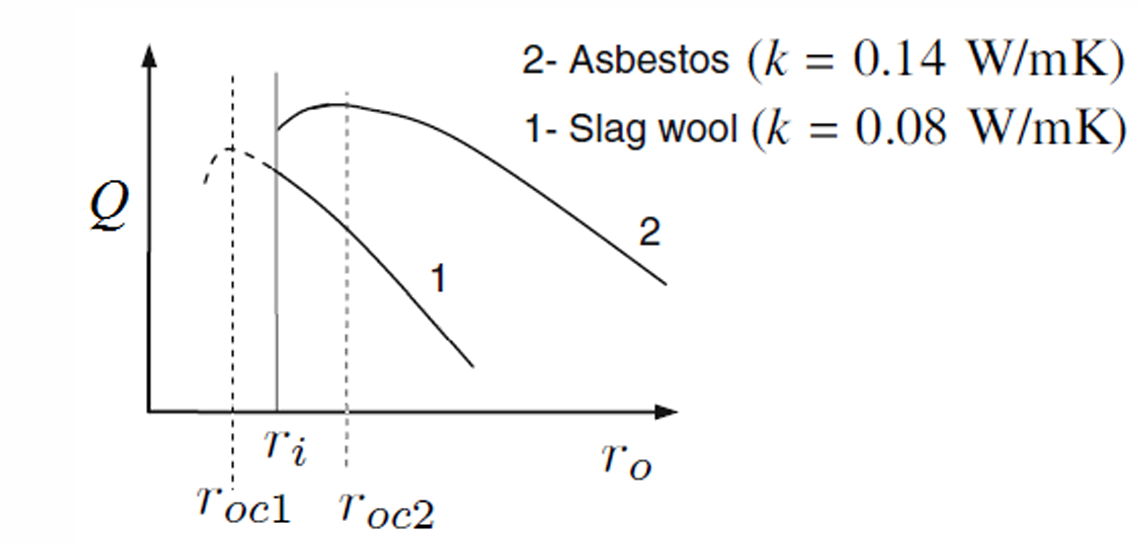14 - Conduction - Critical Radius of Insulation
8. Significance of Critical Radius of Insulation

Critical radius of insulation is a property of the insulating material and outside convection heat transfer coefficient. It is having significance only for radii smaller than about few cm.
On windy days, the external convection heat transfer coefficient is greater compared to calm days. Therefore critical radius of insulation will be greater on calm days.

The value of the critical radius \(r_{oc}\) will be the largest when \(k\) is large and \(h\) is small.
Noting that the lowest value of \(h\) encountered in practice is about 5 W/(m\(^2\).K) for the case of natural convection of gases, and that the thermal conductivity of common insulating materials is 0.05 W/(m.K), the largest value of the critical radius we are likely to encounter is \(r_{oc}=k/h=0.05/5=0.01\) m = 10 mm. This value would be even smaller when the radiation effects are considered. The critical radius would be much less in forced convection, often less than 1 mm, because of much larger \(h\) values associated with forced convection. Therefore, we can insulate hot water or steam pipes freely without worrying about the possibility of increasing the heat transfer by insulating the pipes.
The radius of electric wires may be smaller than the critical radius. Therefore, the plastic electrical insulation may actually enhance the heat transfer from electric wires and thus keep their steady operating temperatures at lower and thus safer levels.
